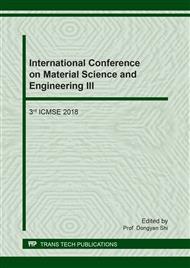p.12
p.18
p.23
p.28
p.34
p.41
p.46
p.51
p.56
SO2 Removal by Powder Activated Carbon in a Drop Tube Furnace Experimental System
Abstract:
SO2 adsorption by powder activated carbon was investigated in a low temperature drop tube furnace. The effects of C/S mole ratio, adsorption temperature, SO2, O2 and H2O concentration on SO2 adsorption kinetics were studied. The results show that SO2 is quickly adsorbed on powder activated carbon in the initial stage and then SO2 adsorption capacity slow increases with time. The Bangham kinetic model can be used to predict SO2 adsorption in the low temperature drop tube furnace. SO2 removal efficiency increases and SO2 adsorption capacity decreases with C/S mole ratio increasing. SO2 removal efficiency and SO2 adsorption capacity both decrease with adsorption temperature increasing. SO2 removal efficiency decreases and SO2 adsorption capacity increases with SO2 inlet concentration increasing. The O2 and H2O from flue gas promote SO2 adsorption by powder activated carbon.
Info:
Periodical:
Pages:
34-40
Citation:
Online since:
October 2018
Authors:
Keywords:
Price:
Сopyright:
© 2018 Trans Tech Publications Ltd. All Rights Reserved
Share:
Citation:


